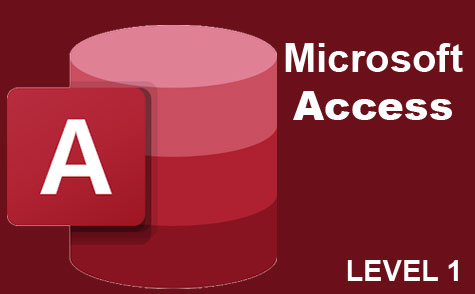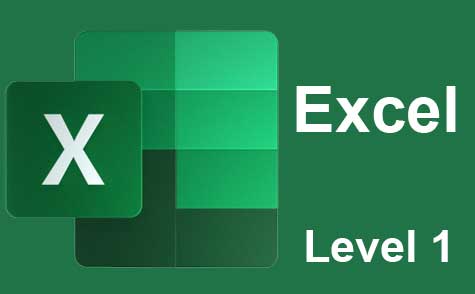Online Class: Microsoft Access 2010

-
23Lessons
-
35Exams &
Assignments -
15Hours
average time -
1.5CEUs
Course Description
Microsoft Access 2010 is an information management tool that allows you to store, report, and analyze information within a relational database. If you're trying to use Excel to manage large amounts of information, then chances are Microsoft Access will be helpful to you. Access makes it easy to keep track, organize, and sort your data. It can be the back-end of a business, keeping your records for you.
It is this course's purpose to teach you the important features of Access 2010 and how to use them. This course was designed for beginners so that even if you've never so much as opened the program before, you can learn how to use it. Once we cover the basics, we'll move on to advanced features. If you've used Access before, perhaps prior versions, the first few lessons will be a refresher and introduce you to some of the updates you'll encounter in the newest version of Microsoft Access.
You'll learn:
· All about databases and how they work
· An understanding of how Access works to make even its complex inner workings seem simple
· How to navigate Access
· How to create tables, forms, reports, and queries
· How to enter criteria into your data
· How to form expressions and create functions
· How to customize the appearance of forms and reports
· How to use Access for home-record keeping or for a business
And much, much more
If you're not familiar with Access 2010, it can be overwhelming. The program is large and navigating it without any help or experience can seem impossible. This course takes its time and shows you around Access. We'll break everything down into small chunks so that Access 2010 is just as easy for the beginner to use as it is someone who's been using it for years. And if you've used Access before, don't worry. We have plenty of updates to show you – and a few more things to teach you as well.
Course Lessons
Lesson 1: Microsoft Access 2010 Introduction
Microsoft Access is an information management tool that allows you to store, report, and analyze information.Lesson 2: Access 2010 Requirements and Setup
This lesson discusses the limits and requirements for running and operating MS Access 2010.Lesson 3: About Databases and Normalization
Creating a database in Access is very easy to do. However, creating a good relational database that performs well isn't so easy.Lesson 4: Access 2010 Database Objects
A database contains objects that are used to store and display large, relational data.Lesson 5: Navigating MS Access 2010
Now that we've covered the basics of a database and learned some important definitions, we're going to start learning MS Access 2010.Lesson 6: Creating a Database and Adding Tables
To add data, we must first create tables.Lesson 7: Object Views
Object views are simply different ways of viewing the object that you're working on.Lesson 8: Creating Simple Forms
A form is an Access database object that's used to create an interface for a database application.Lesson 9: Introduction to Controls and Formatting Forms
Controls simply let you view and work with the data that you have in your database.Lesson 10: Queries
If you want to review, add, or change data in your database, you can use a query.Lesson 11: Using Criteria, Operators, and Wildcards
Query criteria are expressions that Access will compare to the values in your query fields to decide whether or not to include the records that contain values.Lesson 12: Parameter Queries
Whenever you want a query to ask for input each time you run the query, you create what's called a parameter query in Access 2010.Lesson 13: Relationships and Joins
When you define a relationship in Access, you relate data from one table to another.Lesson 14: Creating Calculated Expressions
Expressions in Access 2010 are used to do mathematical calculations, combine or extract text, or validate the data in your database.Lesson 15: Summarizing Data
An aggregate query lets you determine statistics for a set of values.Lesson 16: PivotTables
In this lesson, you're going to learn how to create and customize the PivotTable view.Lesson 17: PivotCharts
Instead of rows and columns like with PivotTable view, PivotChart view shows series and category areas.Lesson 18: Reports
Access 2010 gives you the ability to run reports to view your data.Lesson 19: Designing Your Report
Once you have your report created, you can now modify it to create a more attractive design for it.Lesson 20: Advanced Formatting for Reports
To group and sort data in your reports, switch to Design view and go to the Design tab.Lesson 21: Macros
A macro is essentially a shortcut; a way to automate regularly used tasks or routines.Lesson 22: Printing and Exporting Reports
There are many new ways to print and export reports in Access 2010. In this lesson, we'll introduce you to them, and show you how to do them.Lesson 23: Importing and Exporting Data
In this lesson, we're going to learn the multiple ways that you can import and export data to/from Access.
Learning Outcomes
- Define what MS Access is and why it is useful
- Describe about databases and normalization.
- Summarize database objects.
- Demonstrate navigatipm
- Demonstrate creating a database and adding tables.
- Summarize object views.
- Demonstrate creating simple forms.
- Summarize controls and formatting forms.
- Demonstrate query usage and using criteria, operators, and wildcards.
- Demonstrate parameter queries.
- Demonstrate relationships and joins.
- Demonstrate creating calculated expressions.
- Describe summarizing data.
- Demonstrate pivot tables usage
- Demonstrate designing, creating and printing reports.
- Determine macro usage.
- Summarize importing and exporting data.
- Demonstrate mastery of lesson content at levels of 70% or higher.
Additional Course Information

- Document Your Lifelong Learning Achievements
- Earn an Official Certificate Documenting Course Hours and CEUs
- Verify Your Certificate with a Unique Serial Number Online
- View and Share Your Certificate Online or Download/Print as PDF
- Display Your Certificate on Your Resume and Promote Your Achievements Using Social Media

Related Courses
-
 8 hours
0.8 CEUs
Adobe InDesign 101
+ More Info
8 hours
0.8 CEUs
Adobe InDesign 101
+ More Info
-
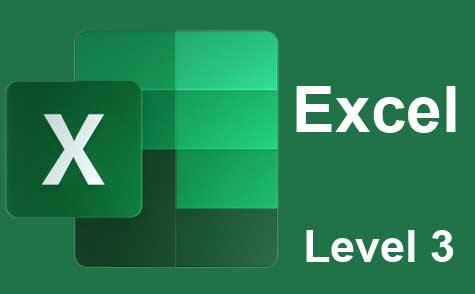 7 hours
0.7 CEUs
Microsoft Excel Level 3
+ More Info
7 hours
0.7 CEUs
Microsoft Excel Level 3
+ More Info
-
 14 hours
1.4 CEUs
QuickBooks Online
+ More Info
14 hours
1.4 CEUs
QuickBooks Online
+ More Info
-
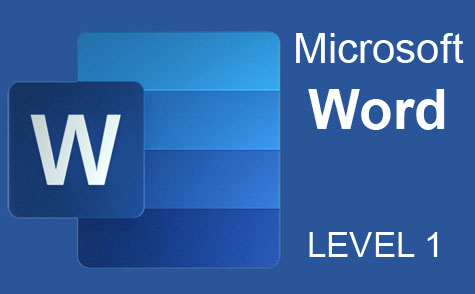 7 hours
0.7 CEUs
Microsoft Word Level 1
+ More Info
7 hours
0.7 CEUs
Microsoft Word Level 1
+ More Info
-
 12 hours
1.2 CEUs
Adobe Photoshop
+ More Info
12 hours
1.2 CEUs
Adobe Photoshop
+ More Info
-
 8 hours
0.8 CEUs
Adobe Premiere 101
+ More Info
8 hours
0.8 CEUs
Adobe Premiere 101
+ More Info
-
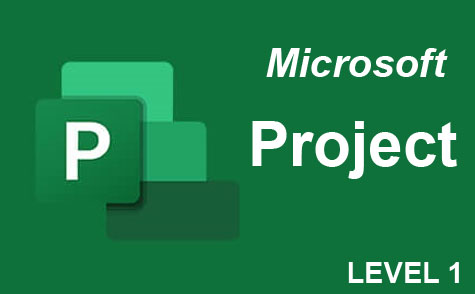 9 hours
0.9 CEUs
Microsoft Project Level 1
+ More Info
9 hours
0.9 CEUs
Microsoft Project Level 1
+ More Info
-
 12 hours
1.2 CEUs
Adobe After Effects
+ More Info
12 hours
1.2 CEUs
Adobe After Effects
+ More Info
-
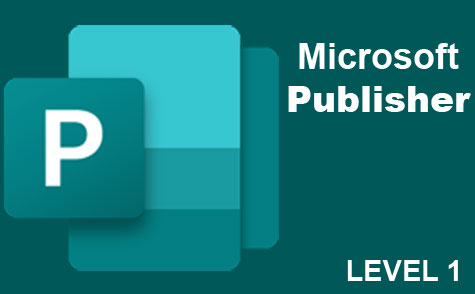 6 hours
0.6 CEUs
Microsoft Publisher Level 1
+ More Info
6 hours
0.6 CEUs
Microsoft Publisher Level 1
+ More Info
-
 6 hours
0.6 CEUs
Adobe Captivate
+ More Info
6 hours
0.6 CEUs
Adobe Captivate
+ More Info
-
 5 hours
0.5 CEUs
Microsoft Outlook Level 1
+ More Info
5 hours
0.5 CEUs
Microsoft Outlook Level 1
+ More Info
-
 20 hours
2.0 CEUs
Photoshop Elements 101
+ More Info
20 hours
2.0 CEUs
Photoshop Elements 101
+ More Info
-
 8 hours
0.8 CEUs
Adobe Lightroom 101
+ More Info
8 hours
0.8 CEUs
Adobe Lightroom 101
+ More Info
-
 8 hours
0.8 CEUs
Microsoft PowerPoint Level 1
+ More Info
8 hours
0.8 CEUs
Microsoft PowerPoint Level 1
+ More Info
-
 7 hours
0.7 CEUs
Final Cut Pro X
+ More Info
7 hours
0.7 CEUs
Final Cut Pro X
+ More Info
-
 6 hours
0.6 CEUs
Google Docs
+ More Info
6 hours
0.6 CEUs
Google Docs
+ More Info
-
 7 hours
0.7 CEUs
Google Sheets
+ More Info
7 hours
0.7 CEUs
Google Sheets
+ More Info
-
 7 hours
0.7 CEUs
Google Slides
+ More Info
7 hours
0.7 CEUs
Google Slides
+ More Info
-
 13 hours
1.3 CEUs
Adobe Illustrator 101
+ More Info
13 hours
1.3 CEUs
Adobe Illustrator 101
+ More Info


